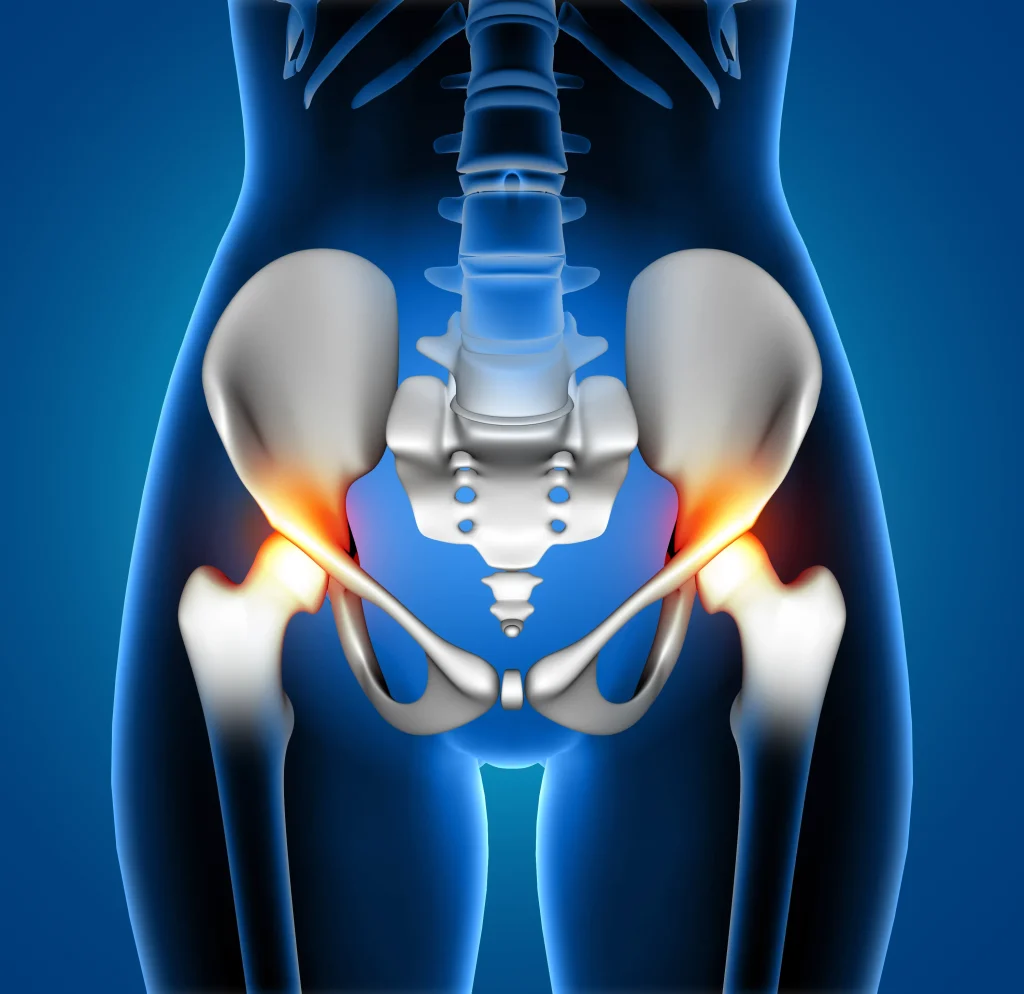Minimally invasive hip joint replacement
Introduction to minimally invasive hip joint replacement
Hip replacement surgery has evolved significantly in recent years, offering patients less invasive options that allow for faster recovery and improved mobility. One of these innovative techniques is minimally invasive hip replacement with short stem prostheses, which I have been using for over 20 years with excellent results. This method reduces trauma to the surrounding tissue, minimizes scarring and allows for faster recovery of joint function compared to traditional hip replacement procedures.

Understanding hip joint replacement
Hip joint replacement, also known as hip arthroplasty, is a procedure in which a damaged hip joint is replaced with an artificial implant. This surgery is primarily performed on patients with severe osteoarthritis, hip fractures or other degenerative conditions that cause chronic pain and limited mobility. While traditional hip replacement techniques require larger incisions and significant muscle disruption, often resulting in longer recovery times, minimally invasive methods focus on reducing surgical trauma and preserving bone – leading to better patient outcomes.
The concept of the short stem prosthesis
Short stem prostheses have been in use for over two decades and are specifically designed to preserve more of the patient’s natural bone structure. Unlike traditional long stem implants, which require more extensive bone cutting, short stem prostheses provide excellent stability while preserving the integrity of the femur. This innovation is particularly beneficial for younger patients who may require replacement surgery in the future, as the preservation of bone substance facilitates subsequent implant changes. However, few of these prostheses have good long-term durability. My experience with one of the best of these short stem prostheses has been excellent for 20 years.
Advantages of the minimally invasive technique
Reduced surgical trauma
Minimally invasive hip replacement is performed through smaller incisions, typically around 10 cm, compared to the 20 cm or more required for conventional procedures. Much more important than the skin incision, however, is the tissue-preserving approach in the depth of the wound, which minimizes damage to the surrounding muscles and soft tissues. This leads to less post-operative pain and a faster recovery.
Faster recovery and rehabilitation
One of the biggest advantages of minimally invasive hip replacement is the shorter hospital stay and faster return to everyday life. Many patients can already walk with support on the first day after the operation and return to normal activities much faster than after a conventional hip replacement.
Lower risk of complications
Smaller incisions and less tissue damage significantly reduce the risk of infection, blood loss and post-operative complications. There is also less swelling and stiffness, which makes the healing process more comfortable.
Improved implant durability
Short stem prostheses are designed to bond optimally with the bone, reducing the risk of implant loosening. This leads to better long-term results and a lower likelihood of needing replacement surgery in the future.
Who is a suitable candidate for minimally invasive hip replacement?
This procedure is particularly suitable for patients with:
- Osteoarthritis that causes severe hip pain and limited mobility
- Rheumatoid arthritis affecting the hip joint
- Hip fractures that impair joint function
- Avascular necrosis leading to bone damage
Younger and active patients benefit particularly from the short stem prosthesis, as the bone-preserving approach facilitates subsequent replacement operations.
Success rates and case studies
Clinical studies and long-term observations over the last 20 years show excellent results with minimally invasive hip joint replacement. Patients report significant pain reduction, improved joint function and a high level of satisfaction after the operation. The durability of short stem implants has also been intensively studied – many show stable fixation and long-term high performance.
Frequently asked questions
Recovery time varies by individual, but most patients are able to walk with support on the first day after surgery and return to normal activities within 4 to 6 weeks.
Although the surgical technique is somewhat more demanding, the overall costs are comparable to those of a conventional hip replacement.
As with any operation, there are risks such as infections, blood clots and implant loosening, but these are considerably reduced by the gentler surgical method.
My experience shows that the short-shaft prosthesis I use has an excellent durability of over 20 years with the right care and an adapted lifestyle.
If you are considering a hip replacement, please make an appointment at my practice in Vienna for a personal consultation and to discuss your treatment options.
Conclusion
Minimally invasive hip replacement with short stem prostheses represents a significant advance in orthopaedic surgery, offering patients faster recovery, less surgical trauma and excellent long-term results. With over 20 years of clinical experience and success, this procedure is a reliable and effective solution for people with hip degeneration.
Please do not hesitate to contact me for more information or to make an appointment at my practice in Vienna.